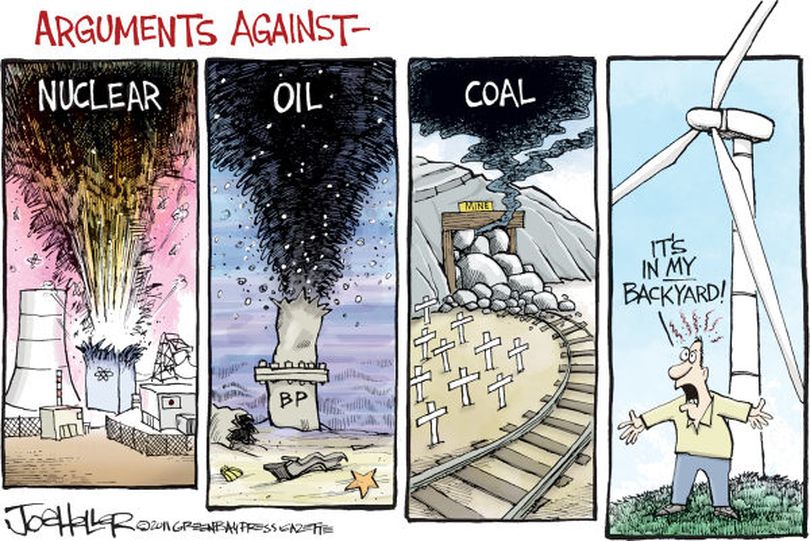Net zoals men in de Verenigde Staten al onderzocht heeft om oude, erg vervuilende kolencentrales om te vormen naar
milieuvriendelijke elektriciteitscentrales gebeurt dit ook in andere landen.
In Tsjechië wil men alvast twee bestaande kolencentrales gaan uitrusten met
kernreactoren: SMRs.
En weg met de steenkolen natuurlijk.

Zulks heeft natuurlijk
zeer vele voordelen:
- De uitstoot van broeikasgassen en andere giftige stoffen wordt vermeden.
- Een veel hogere bedrijfszekerheid en uiteraard een veel hogere capaciteitsfactor.
- Bestaande kostelijke infrastructuur kan behouden blijven.
Denken we maar aan:
- Hoogspanningsleidingen en de verdere distributie in het land.
- Koeltorens.
- Generatoren.
- Wegen en gebouwen.
- Erg veel tijds- en milieuwinst door deels hergebruik van de bestaande infrastructuur.
- Werkgelegenheid.
- Economisch voordelen.
- Etc.
Czechia’s ČEZ plans SMRs at two coal-fired power plants sites
28 Feb 2023
Czechia’s ČEZ plans SMRs at two coal-fired power plants sites
The Czech state-owned power utility ČEZ has selected two preferred locations for small modular reactors (SMR) in Czechia.
After selected the Temelín nuclear power plant site to build the country’s first SMR, the company now plans to deploy units in Dětmarovice and Tušimice, where are currently located coal-fired power plants (600 MW at Dětmarovice and 800 MW at Tušimice).
The two sites will go through a whole series of other intensive survey and monitoring works before it becomes definitively clear whether they are suitable for the location of a nuclear project.
As part of its Vision 2030, ČEZ committed to prepare the construction of small modular reactors with a total output of over 1,000 MW after 2040.
However, SMRs could be built in the mentioned locations as early as the second half of the 1930s.
ČEZ has already signed memoranda of cooperation in the field of SMRs with NuScale, GE Hitachi, Rolls Royce, EdF, Westinghouse, KHNP and Holtec.
In January 2022, Czechia committed to phase out coal in power generation by 2033.
Coal and lignite account for 41% of the country’s capacity, with 8.9 GW at end-2021, followed by nuclear (20%, 4.3 GW).
Bron: Enerdata
In de Verenigde Staten gaat het over erg veel bestaande kolencentrales volgens het Department of Energy.
Liefst 80% van de kolencentrales wordt in aanmerking genomen voor deze kolen naar nucleaire conversie.
- 157 recent stilgelegde kolencentrales
- 237 nog in bedrijf zijnde kolencentrales
- Samen dus 394 kolencentrales. 80% van 394...
Dat zijn liefst 315 kolencentrales die potentieel omgevormd kunnen worden van kolen naar nucleair.
DOE Report Finds Hundreds of Retiring Coal Plant Sites Could Convert to Nuclear
September 13, 2022
DOE Report Finds Hundreds of Retiring Coal Plant Sites Could Convert to Nuclear
WASHINGTON, D.C.— The U.S. Department of Energy (DOE) today released a report showing that hundreds of U.S. coal power plant sites could convert to nuclear power plant sites, adding new jobs, increasing economic benefit, and significantly improving environmental conditions.
This coal-to-nuclear transition could add a substantial amount of clean electricity to the grid, helping the U.S. reach its net-zero emissions goals by 2050.
The study investigated the benefits and challenges of converting retiring coal plant sites into nuclear plant sites. After screening recently retired and active coal plant sites, the study team identified 157 retired coal plant sites and 237 operating coal plant sites as potential candidates for a coal-to-nuclear transition. Of these sites, the team found that 80% are good candidates to host advanced reactors smaller than the gigawatt scale.
A coal to nuclear transition could significantly improve air quality in communities around the country. The case study found that greenhouse gas emissions in a region could fall by 86% when nuclear power plants replace large coal plants, which is equivalent to taking more than 500,000 gasoline-powered passenger vehicles off the roads.
It could also increase employment and economic activity within those communities. When a large coal plant is replaced by a nuclear power plant of equivalent size, the study found that jobs in the region could increase by more than 650 permanent positions. Based the case study in the report, long-term job impacts could lead to additional annual economic activity of $275 million, implying an increase of 92% tax revenue for the local county when compared to the operating coal power.
“This is an important opportunity to help communities around the country preserve jobs, increase tax revenue, and improve air quality,” said Assistant Secretary for Nuclear Energy Dr. Kathryn Huff. “As we move to a clean energy future, we need to deliver place-based solutions and ensure an equitable energy transition that does not leave communities behind.”
The reuse of coal infrastructure for advanced nuclear reactors could also reduce costs for developing new nuclear technology, saving from 15% to 35% in construction costs.
Coal-to-nuclear transitions could save millions of dollars by reusing the coal plant’s electrical equipment (e.g., transmission lines, switchyards), cooling ponds or towers, and civil infrastructure such as roads and office buildings.
Argonne National Laboratory, Idaho National Laboratory, and Oak Ridge National Laboratory conducted the study, sponsored by the Department of Energy’s Office of Nuclear Energy.
Bron: Department of Energy
~~~~~~~~~~~~~~~~~~~~~~~~~~~~~~~~~~~~~~
Ge ziet het natuurlijk al van ver aankomen dat sommige
dogmatisch anti-nucleairen nog verder over de rooie gaan omdat landen deze beslissing nemen of nog maar overwegen.


Er zijn er bij met erg lange teentjes... en ze voelen zich nogal rap "persoonlijk" geviseerd.
In België, waar men kerncentrales deels gaat vervangen door
extra aardgascentrales, houden sommigen
dogmatisch anti-nucleairen zich zelfs ledig met een louter
semantische discussie of dit heden als "promoten" van fossiele brandstoffen beschouwd kan worden.
Lekker belangrijke discussie.
Not.
Het zijn de fossiele brandstoffen die het
acute probleem vormen.
De conversie van kolencentrales naar nucleaire elektriciteitscentrales is een valabele weg.
Het grotendeels vervangen van kerncentrales door
extra aardgascentrales is dat niet.
Integendeel.
Nuchtere Nederlanders kunnen dat in één zin samenvatten:
Kerncentrale past goed in energiesysteem met veel hernieuwbare bronnen














